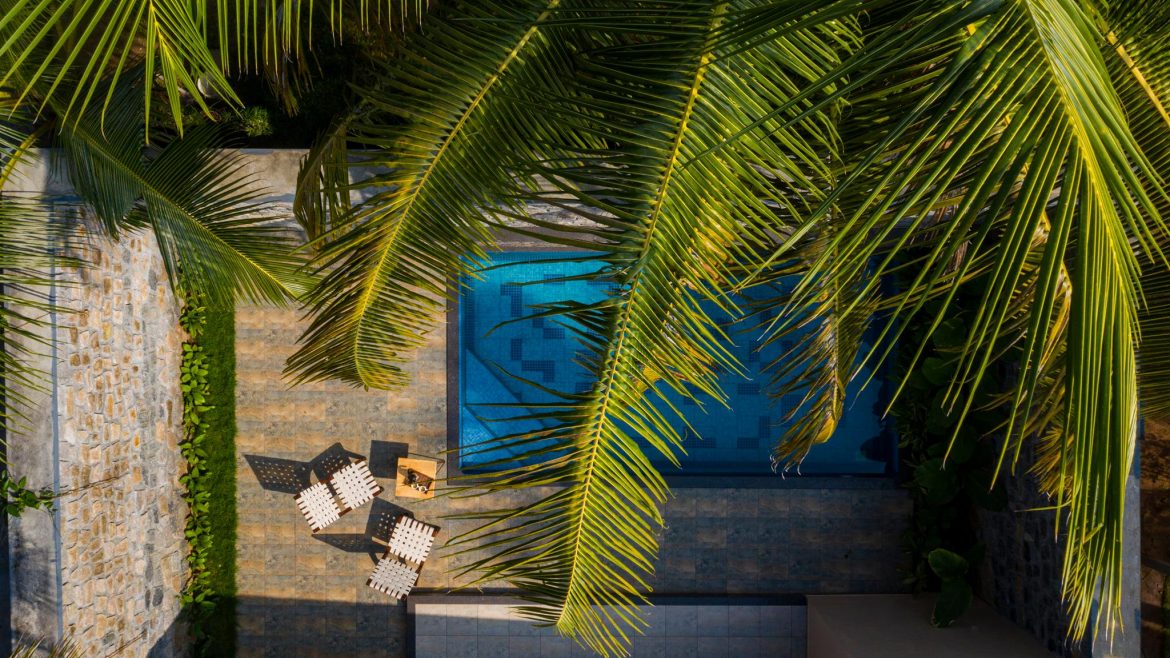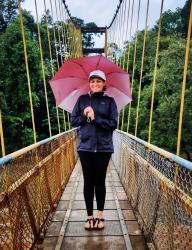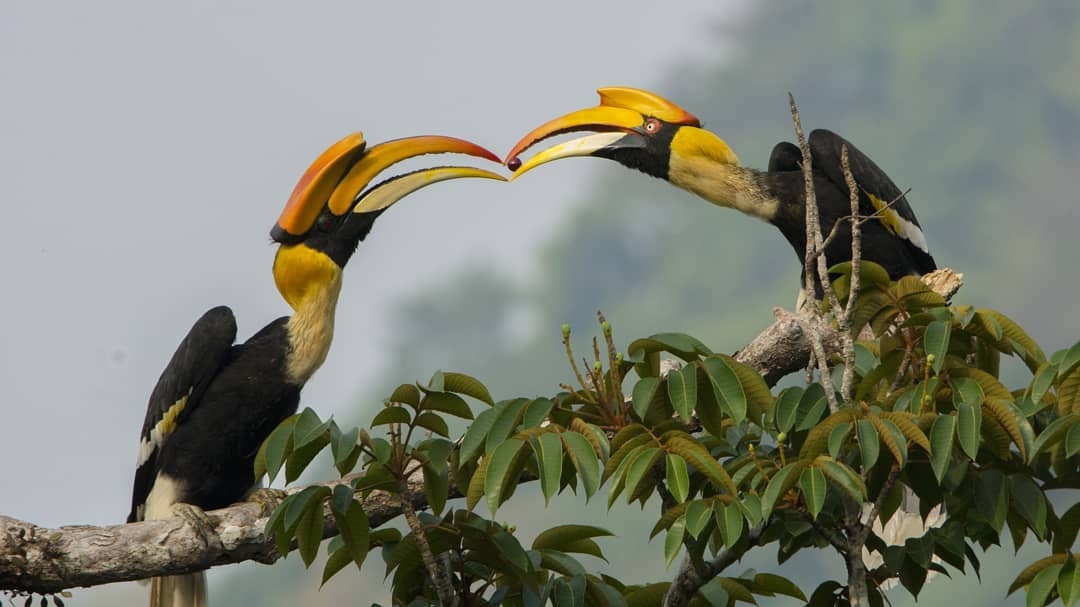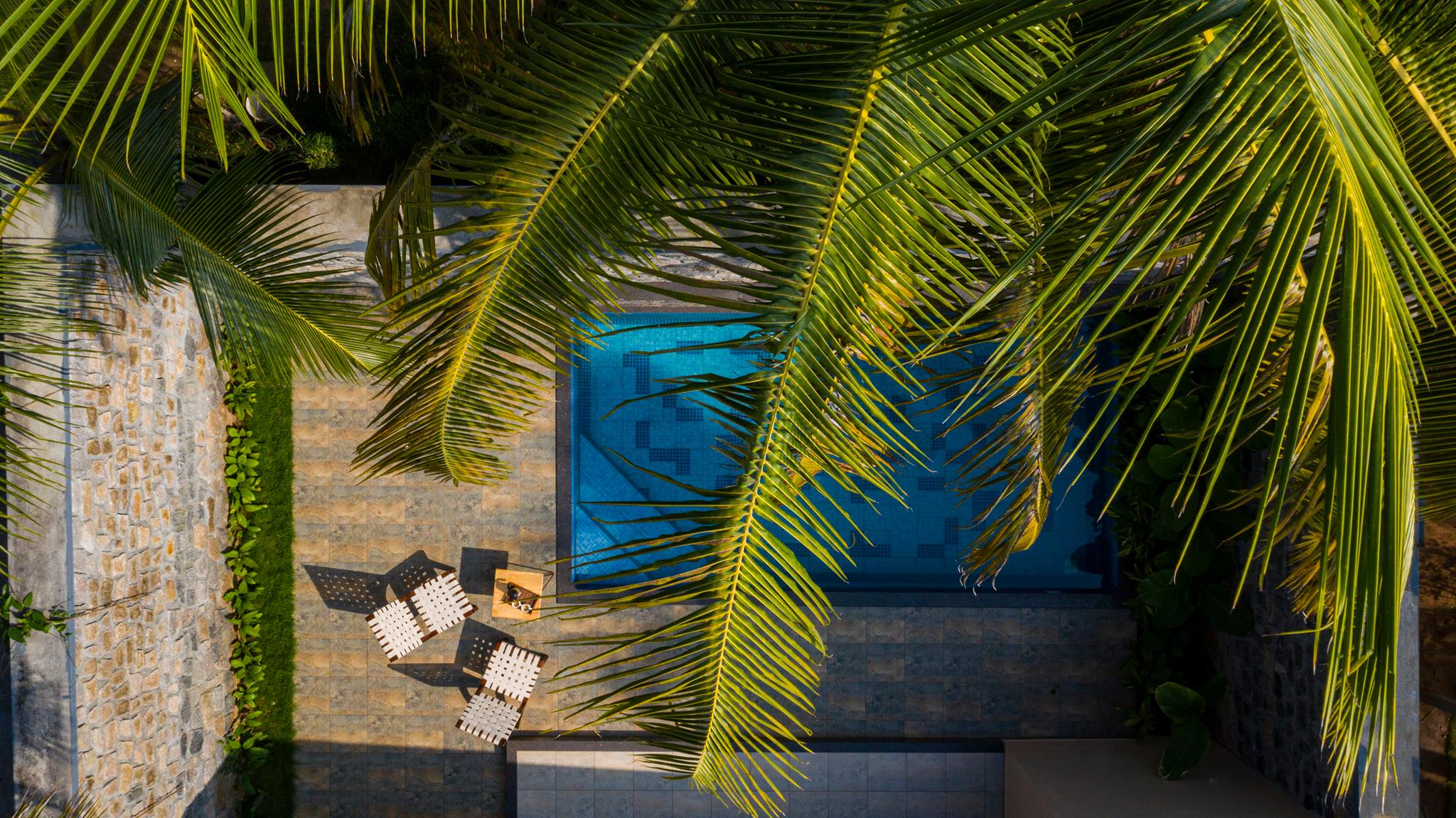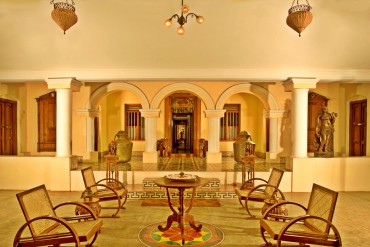Nestled on the edge of a coconut plantation, bordering the forests of the Anamalais, with views of a meandering stream, is By the Riverside, a beautiful resort in the foothills of Sethumadai, in the pristine countryside of Pollachi.
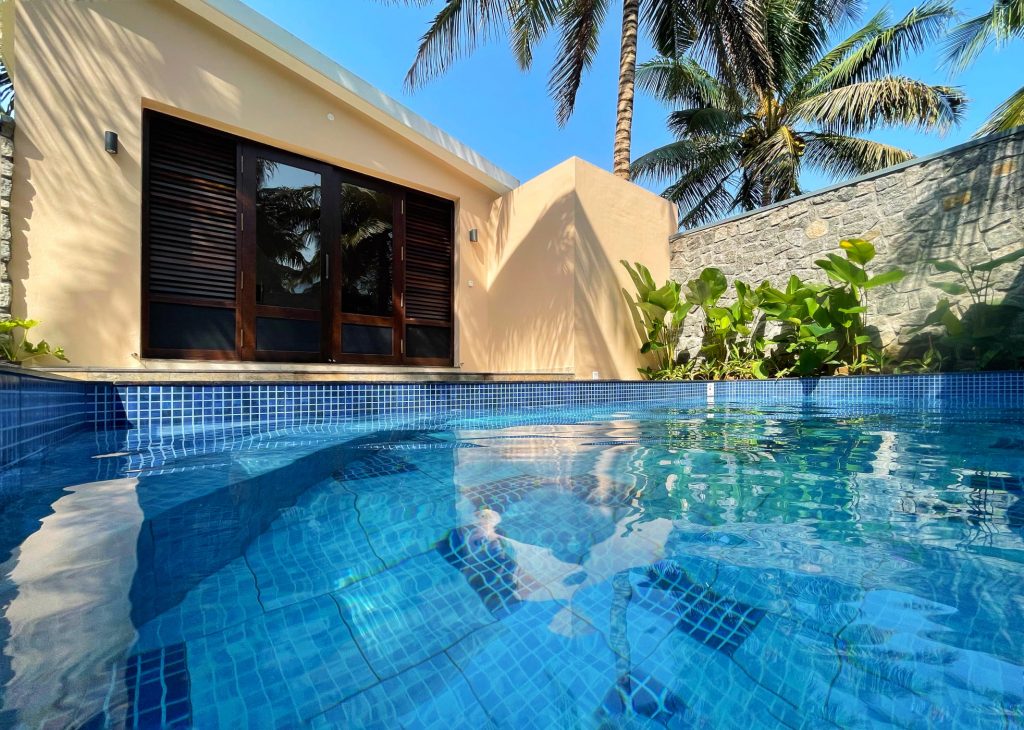
My ancestors had lived in the villages around there, so my brother and I were on a quest to discover our natural roots – the biodiversity of the area.
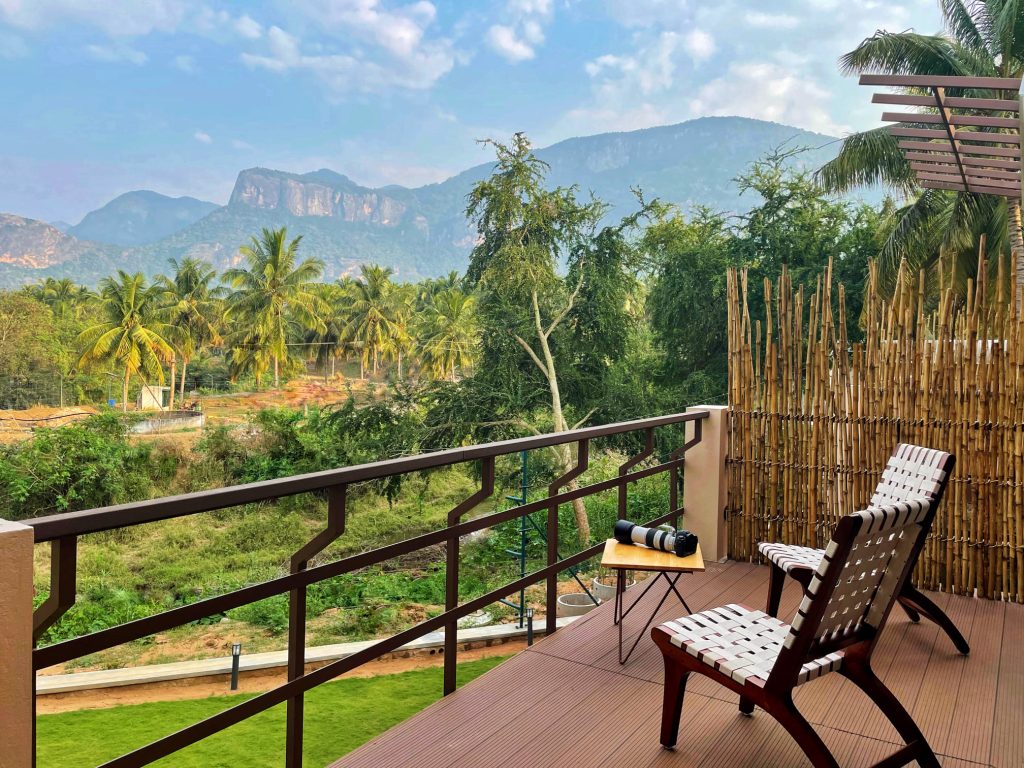
As we sipped on farm-fresh tender coconut water, the first to welcome us with an aerial display of green and brown was the iconic state bird of Tamil Nadu, the Emerald Dove. The flavourful Chettinad style lunch sent us into a stupor, interrupted only by the metallic calls of the Rufous treepie. The late afternoon was spent enjoying the breeze on the balcony overlooking the stream, where a Stork-billed kingfisher dived into the water and Chestnut-headed bee-eaters swooped in the air.
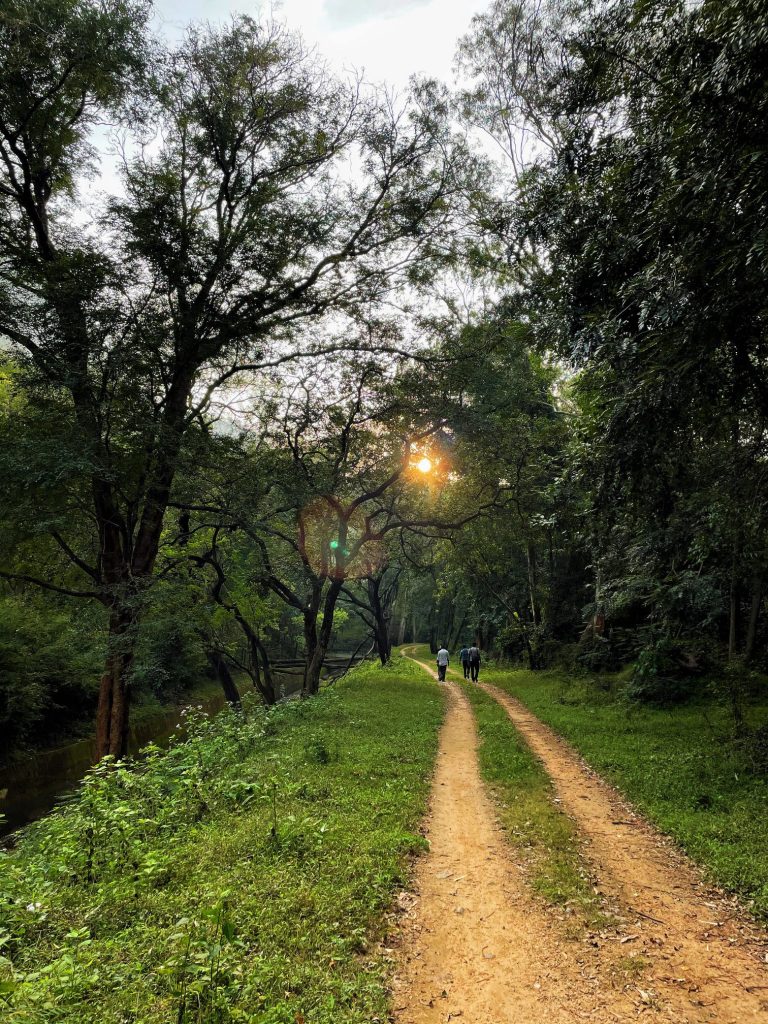
Our evening bird walk along a sylvan path next to a canal gave us a window into the world our ancestors might have lived in, on the edge of the pristine forests of the Anamalais. The silence of the woods was interrupted only by birdcalls. As we were observing a pair of Black-hooded orioles and a Golden oriole perched on the same tree, we noticed another dark bird with a red beak on a high branch.
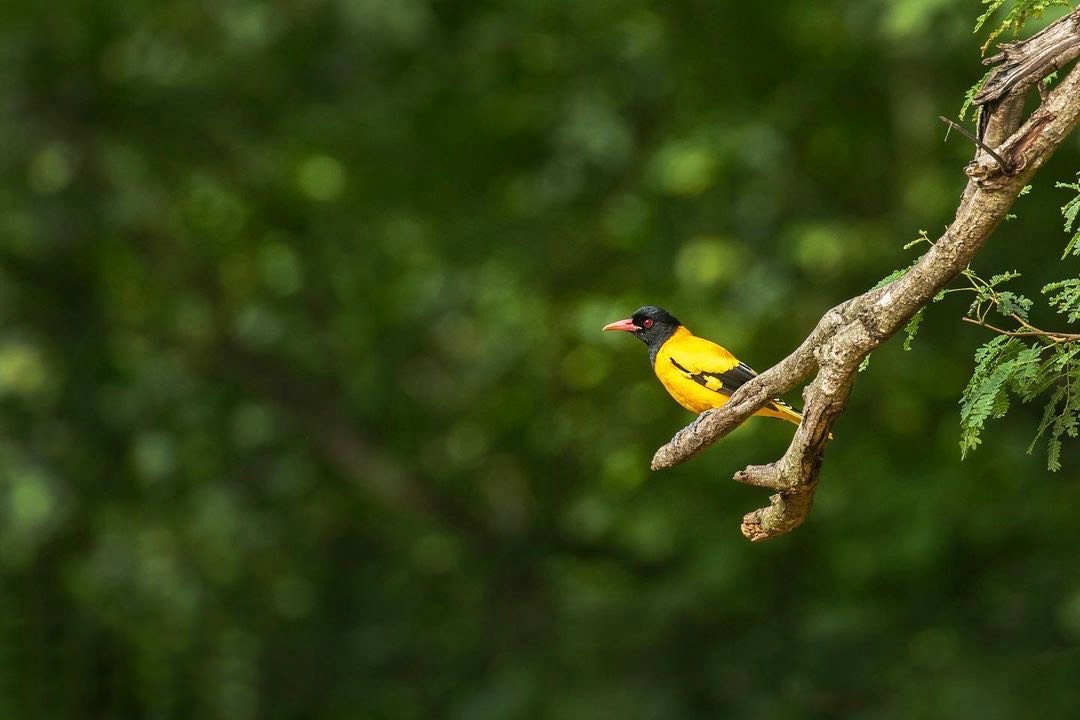
Pravin, our host identified it as Dollar bird. Our first lifer of the trip. Serenaded by the song of the Malabar whistling thrush we ambled along the forest path our eyes peeled for birds in the trees and undergrowth, while our guide Muthu kept a keen lookout for elephants, especially after we heard a low rumbling call reverberate through the stillness of the forest.
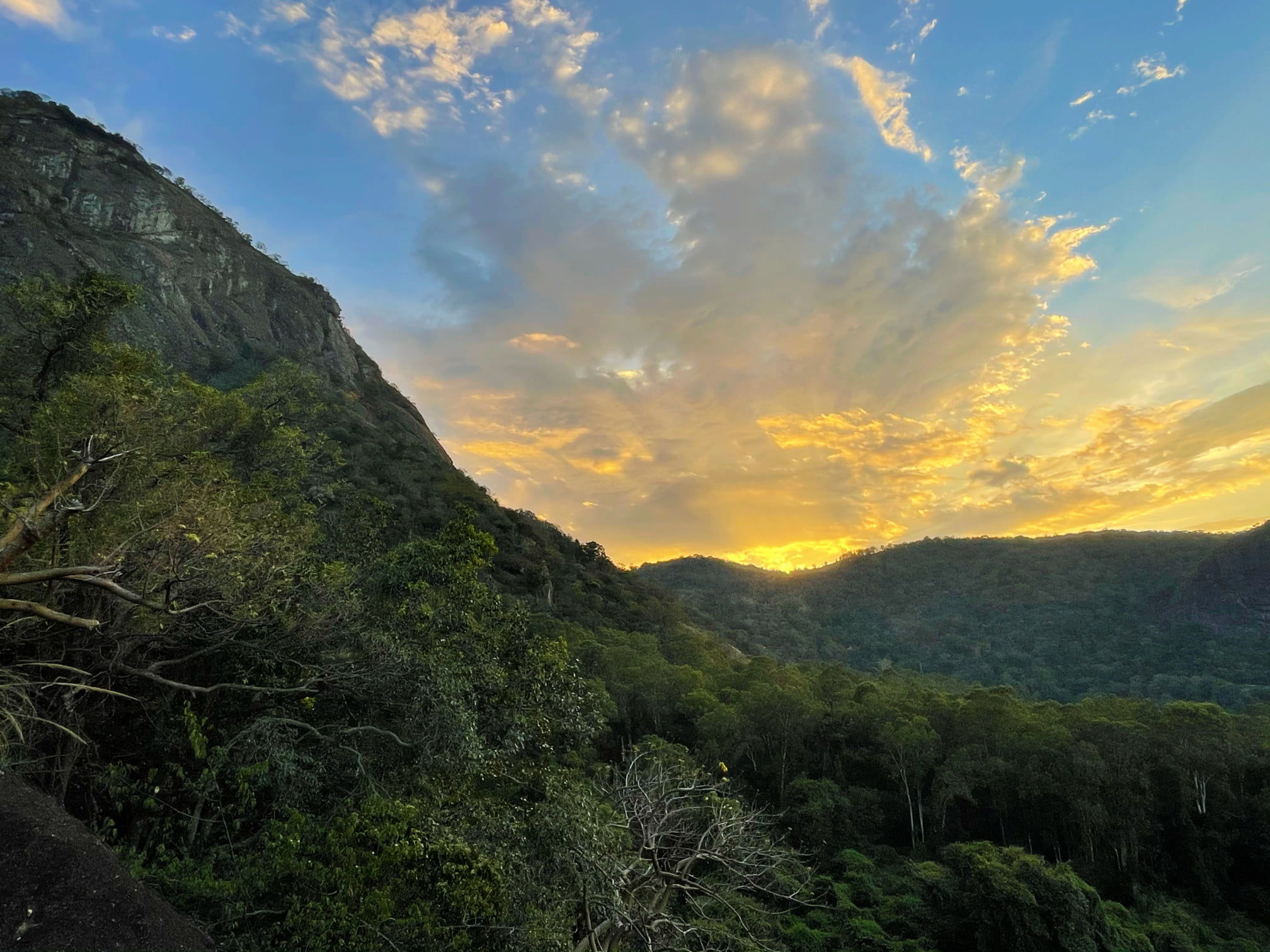
A pair of Blue bearded bee-eaters looked on while Ashy drongos made sweeping flights to return to the same perch. The repetitive calls of the Coppersmith, White-cheeked, and Brown-headed barbets kept a steady rhythm, while the shrill whistles of the Hill mynah broke the monotony.
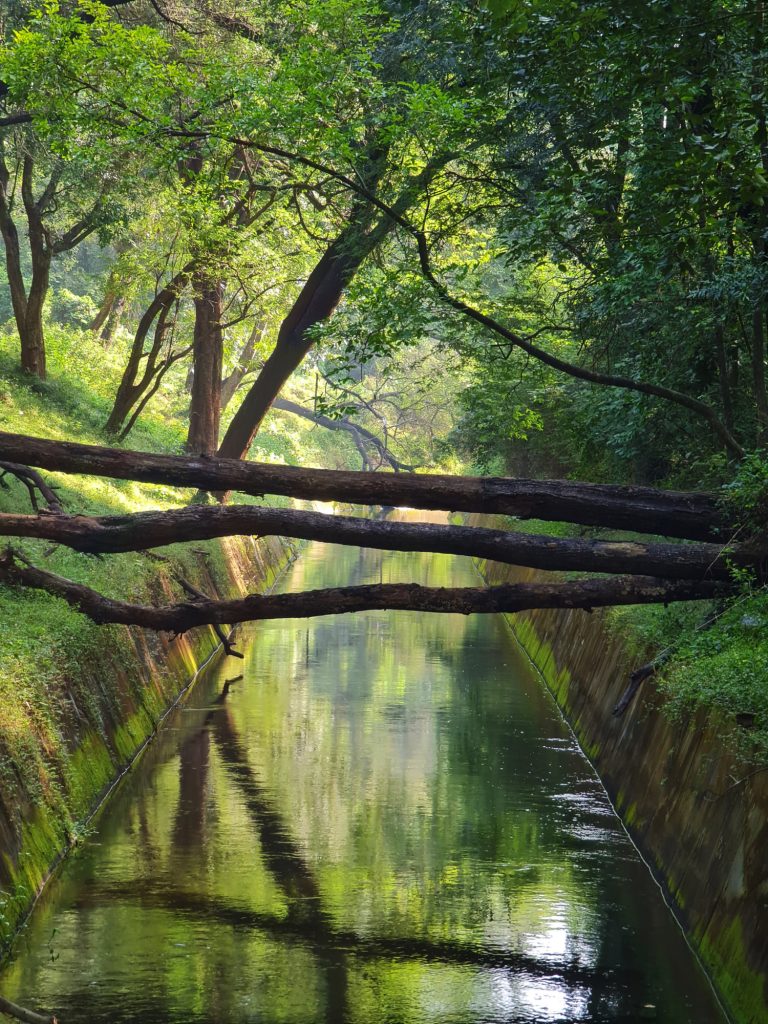
Towards the end of the walk, while we were watching a juvenile Crested hawk-eagle contemplating taking to flight, we heard the whoosh-whoosh flapping of giant wings of a Great Indian hornbill flying overhead – a good omen for our trip to Valparai the next day.
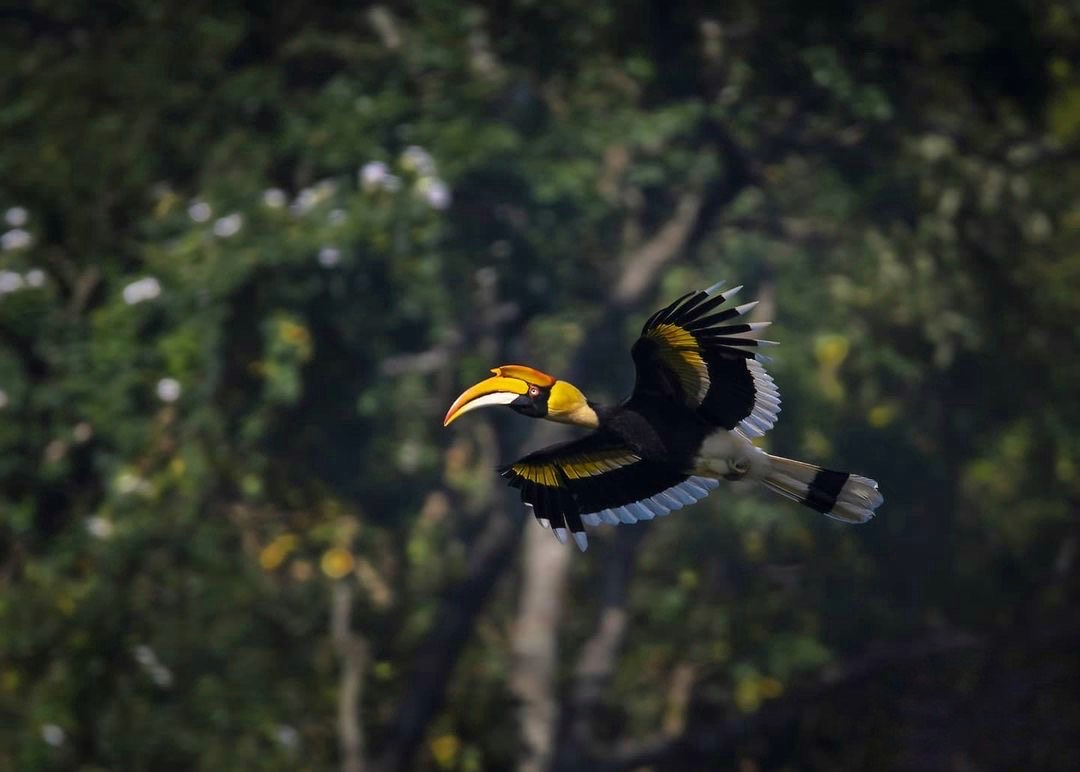
The road to Valparai with its 40 hairpin bends passes through many little ecosystems each holding unique treasures. Muthu seemed to have insights into each of these. At hairpin bend number three, Great Indian hornbills, playfully cartwheeling in the air made for a great start to the day. Soon enough we found a fruiting ficus tree with a whole flock of them feeding, tossing, flying, cackling, and creating quite the ruckus. Grey-headed bulbuls, Flame-throated bulbul, Golden-fronted leafbird stole our attention from the hornbills briefly.
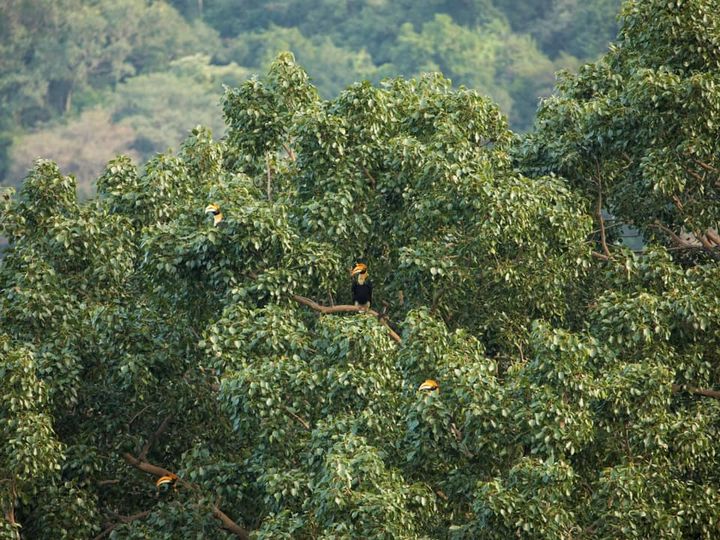
A little higher along the road was a Nilgiri Tahr and her young, precariously balanced on rocks overlooking the Aliyar dam below.
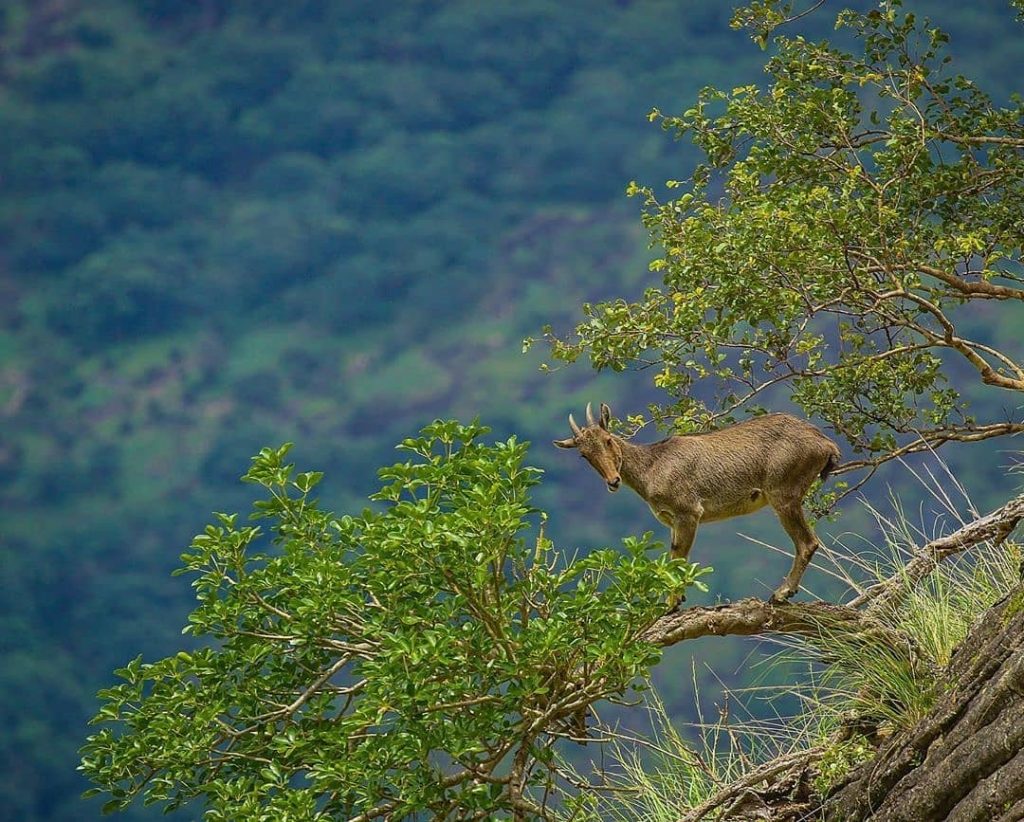
Further along, Muthu said, Nilgiri langurs are usually seen here, and so it was! We stopped at the interpretation center at Valparai, a treasure trove of information on the flora and fauna of the Anamalais illustrated through beautiful artwork.
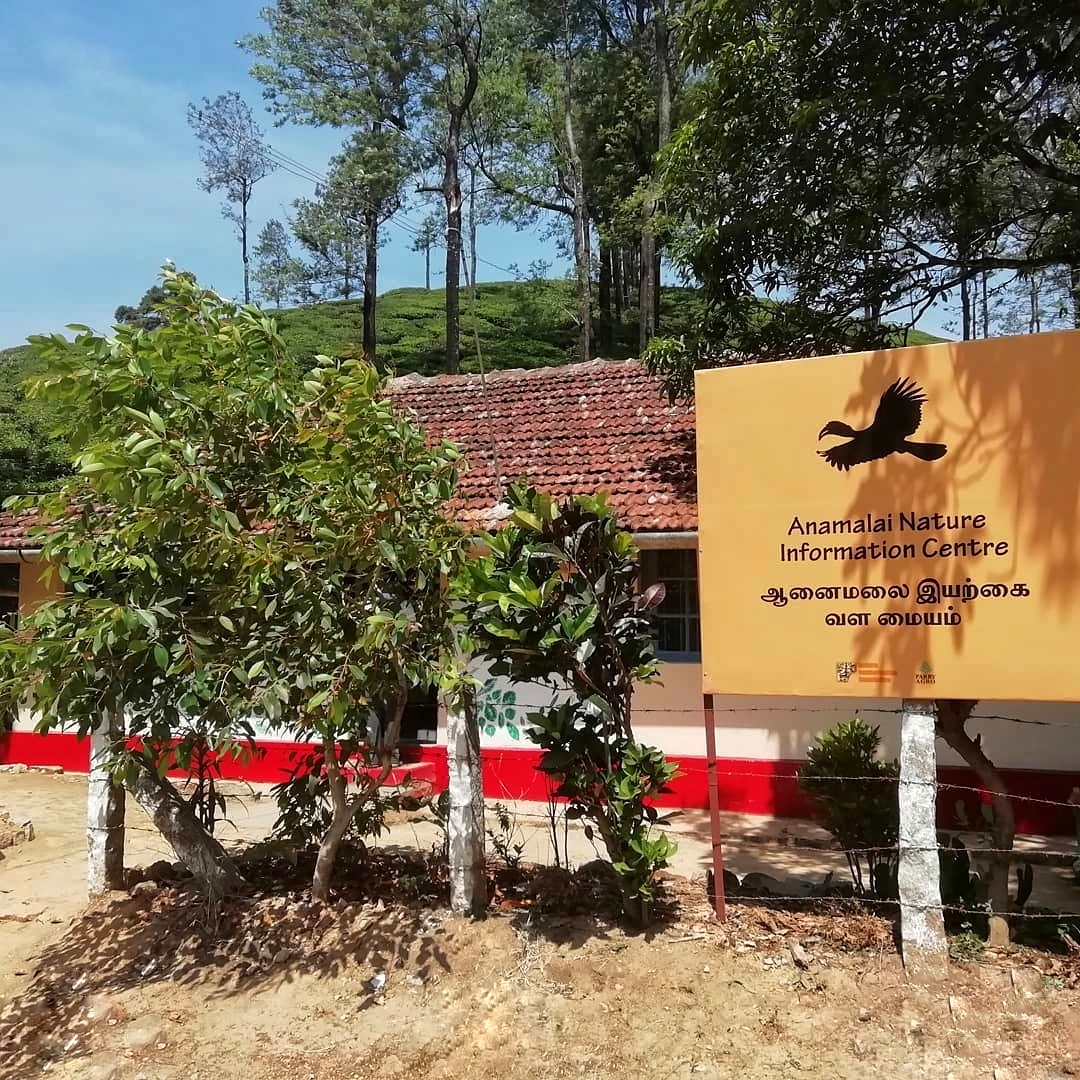
Our final target was the flagship species for Valparai – the endangered Lion-tailed Macaque. When we spotted them near some buildings, I was confused as they are supposed to be arboreal. But as with many species they had adapted to life around humans. We watched them for a while feeding on figs, grooming each other, playing, exploring. When one came to check the car, we decided it’s time to leave.
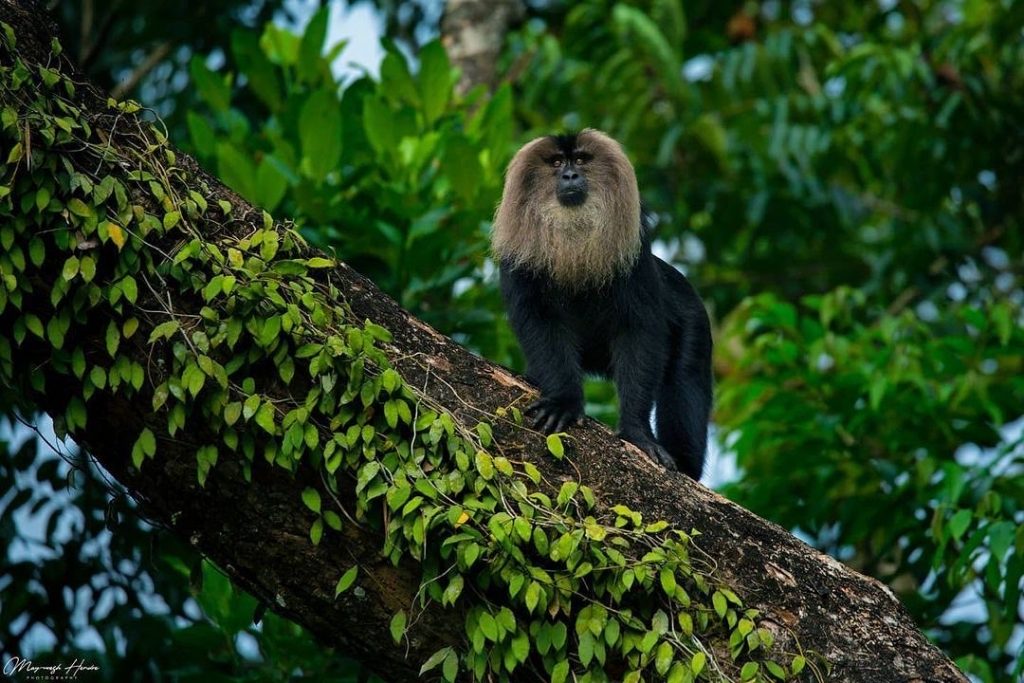
On our last morning in Sethumadai, we went back to walk along the canal that we had loved so much on the first evening of our visit. Early morning before the sun was up, the mist still hung in the woods. The dense canopy was alive with birdsong but hid most of the birds. And then in the distance, we saw the long white tail feather swishing in the air as an Indian paradise flycatcher flitted between trees welcoming the morning.
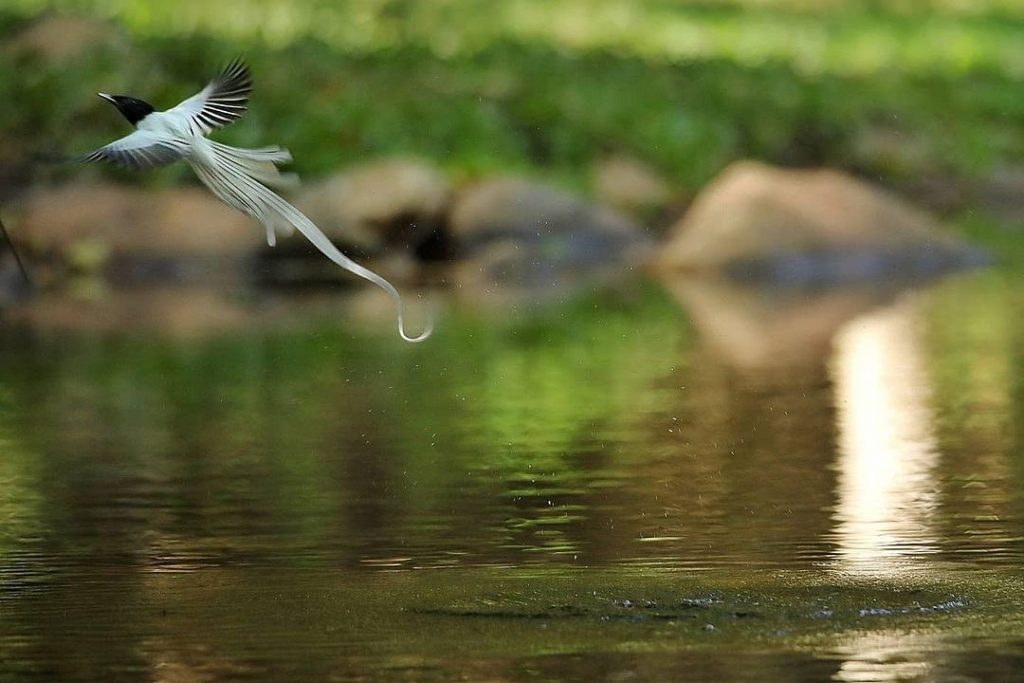
As the sun came up, it seemed like all the green birds came out to bask: Vernal hanging parrots, Leafbirds, Grey-headed bulbuls, and the Emerald Dove. The pecking of woodpeckers echoed through the forest. Racket-tailed, Ashy, Black, and White-bellied drongos outdid one another in their variety of calls.
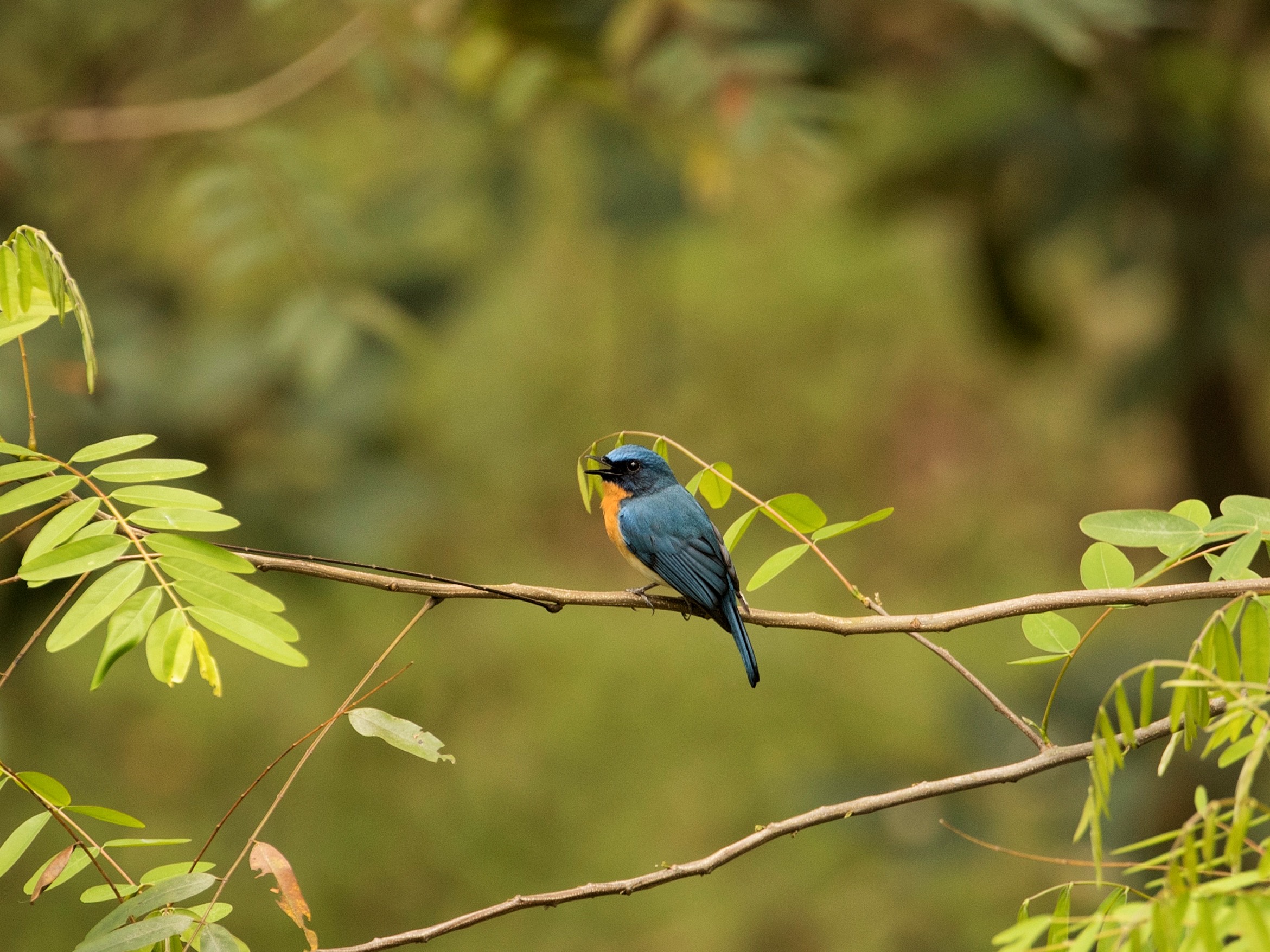
A Tickell’s blue flycatcher flew between perches. A Blue-faced malkoha peered from the thicket. And then when it was warm enough, it was time for the butterflies. A Southern birdwing nectared in the canopy, while Castors floated around us. The Langurs and the Giant squirrels leaped between branches. It was a beautiful experience to watch the forest wake up.
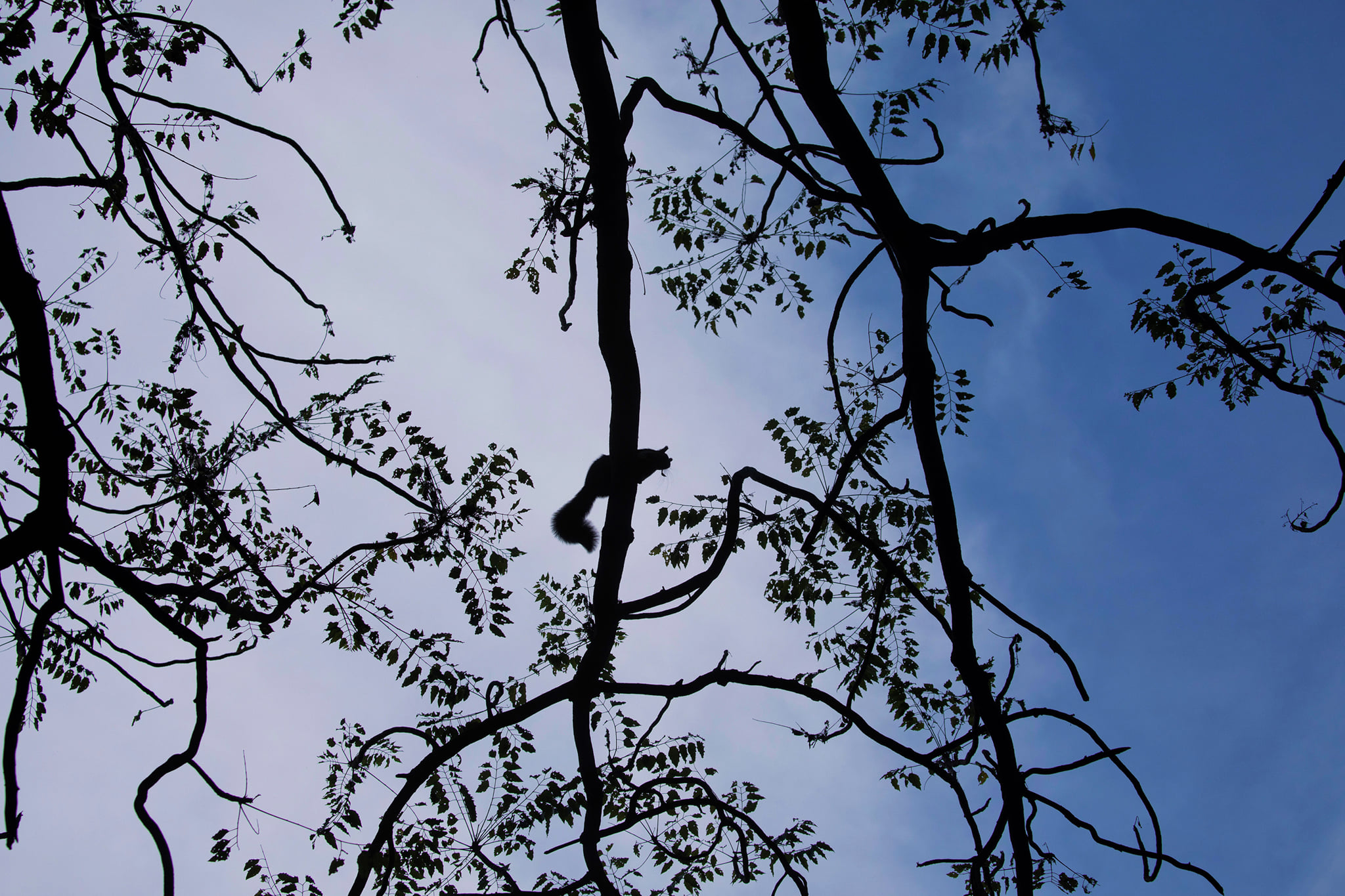
We returned home feeling more aware of where our love of nature comes from, and ever more determined to return to explore more.
To book your tours and for more about By The Riverside, click here.

